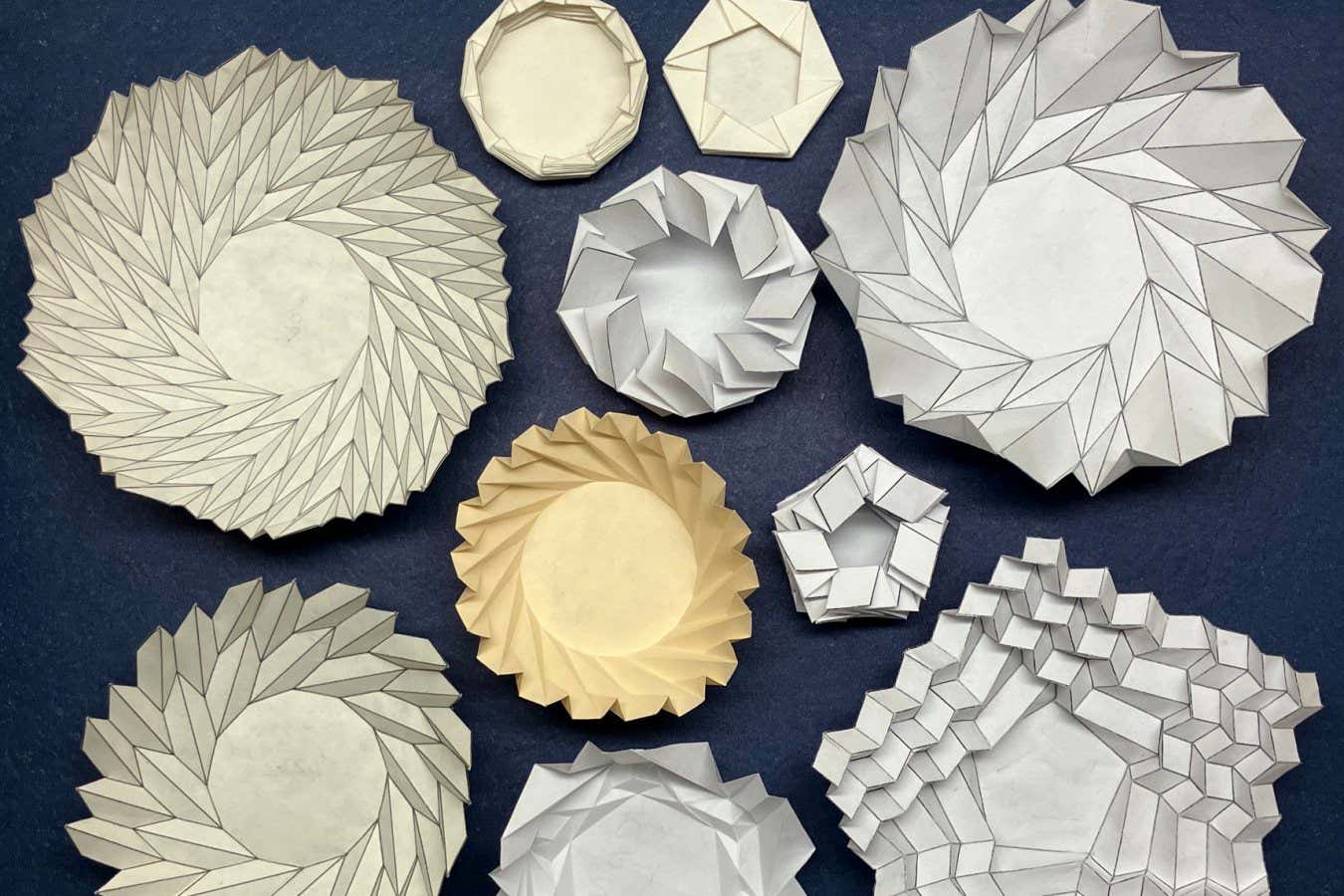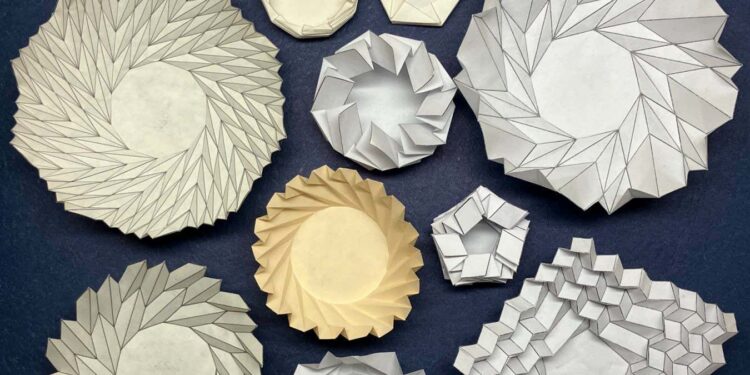
Origami “bloom” designs fold into flower-like shapes
BYU Photo
A new family of origami shapes that unfold like flower petals could be used to design more effective structures in space, like telescopes or solar panels.
Origami structures, based on the Japanese paper-folding art, are used by engineers because they can be stored compactly but then opened up into much larger shapes. However, these origami patterns can’t always be easily packed away and are often complex to unfold, where one failed step can prevent the entire structure from deploying.
Now, Larry Howell at Brigham Young University in Utah and his colleagues have found a new family of origami shapes they call bloom patterns that unfold in one smooth motion to create a bowl-like structure, resembling a flower. “We’re able to make new things that have never been done before, but then, at the same time, we’re creating these beautiful shapes,” says Howell.
Although a few instances of bloom patterns were previously known to origami enthusiasts and researchers, Howell and his team realised they belonged to a larger class of shapes with common features: a polygon centre surrounded by identical, symmetric creases that unfolds in one smooth motion from a flat, thin disc to a much larger, curved, three-dimensional shape.
After classifying different variants of bloom pattern and coming up with a mathematical explanation for how they worked, the researchers built functioning versions using materials of different thickness, like plastic or thick acrylic panels, and showed that each shape always unfolded reliably.
Being able to unfold in one go could be an advantage for space structures because it reduces the chances of a misfold ruining the entire procedure, says Michael Bartlett at Virginia Tech. “Everything has to go right. If there’s a weak link in the chain, the whole thing fails,” he says. “When I watch these [bloom patterns] unfold, you can see that it doesn’t necessarily have to do one thing after another for it to reach its maximum deployment.”
Space telescopes are often forced to use relatively flat mirrors for their observations, but the bloom patterns’ curved shapes could be used to deploy dishes more like some Earth-based telescopes, which produce more accurate images, says Howell.
Having a mathematical model for how these bloom patterns unfold could also help researchers design working origami structures more quickly, says Jamie Paik at the Swiss Federal Institute of Technology in Lausanne. “You can make a better prediction of what a potential invention could look like, or if it’s worth it, or if you should go in a different direction.”
Topics:
Source link : https://www.newscientist.com/article/2493104-flower-like-origami-patterns-could-inspire-folding-spacecraft/?utm_campaign=RSS%7CNSNS&utm_source=NSNS&utm_medium=RSS&utm_content=home
Author :
Publish date : 2025-08-20 00:01:00
Copyright for syndicated content belongs to the linked Source.







